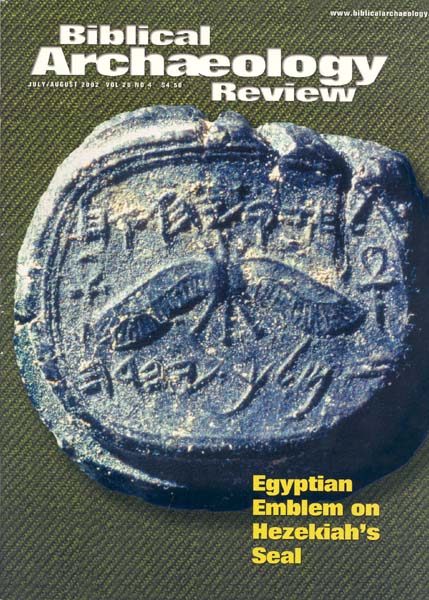Biblical Archaeology Review, July/August 2002

Features
Most Dead Sea Scroll scholars agree that Qumran, the settlement near the caves where the scrolls were found, was inhabited by Essenes, an anti-Temple Jewish sect in the years before the Roman destruction of 70 C.E. A stalwart minority of scholars maintains, though, that the evidence is insufficient—that in fact Qumran was not an […]
Scholars have spilled much ink trying to understand the relationship that existed between the Canaanites and the Israelites before the establishment of the monarchy. Can the two groups—the Canaanites and Israelites—actually be distinguished in the archaeological record of Iron Age I (1200–1000 B.C., the Biblical period of the Judges)? I should say at the […]
During the late 1920s, an expedition by the Pacific School of Religion discovered three houses of strikingly similar design at Tell en-Nasbeh, Biblical Mizpah. When the first of these was unearthed in 1927, excavators thought it was a temple, and Professor William F. Badè, the excavation director, held a church service in its ruins.1 […]
I remember it vividly. It was September, 1991. I was a new, although not exactly a young, scholar, still working toward my master’s degree at Tel Aviv University. Professor Benjamin Mazar, the doyen of Israeli archaeology and former president of Hebrew University, invited me to a salon he regularly held in his apartment. […]
